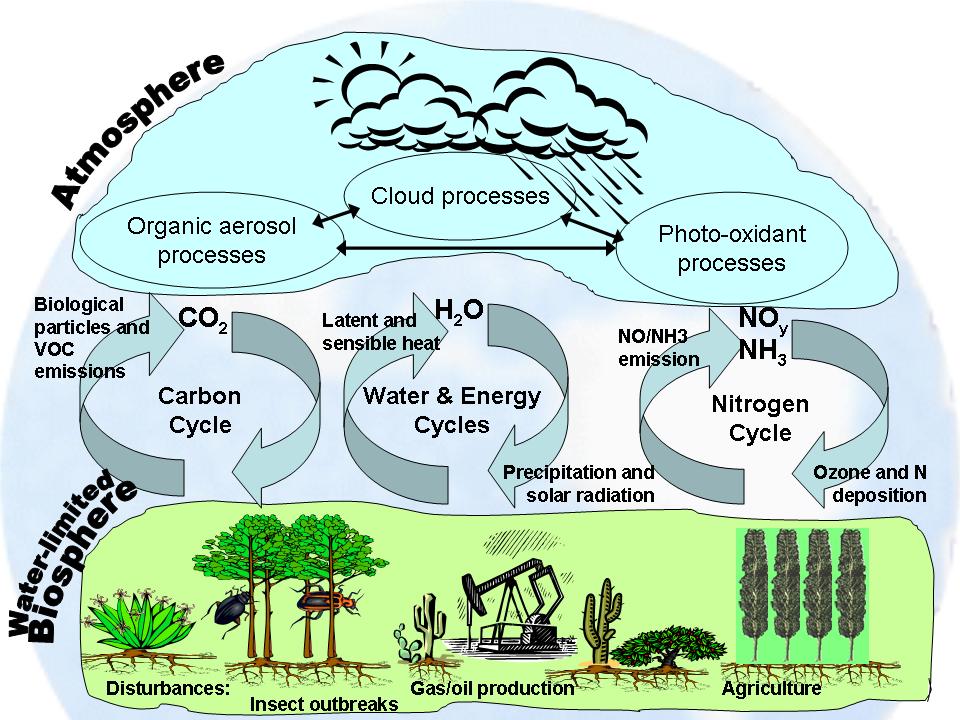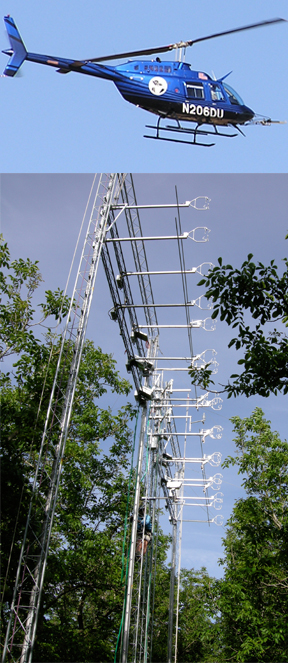BEACHON
|
|||||
|
The BEACHON project conducted experimental and numerical research studies to enhance understanding of the roles of biogenic aerosols, nitrogen trace gases and oxidants in linking and regulating the carbon and water cycles. The BEACHON-RoMBAS field campaign was conducted in Woodland Park, Colorado, during the summer of 2011. The Earth system has undergone extensive change during the last 60 years, with important implications for human health, resource management, ecosystem services and the environment. The ability to predict these changes and their impacts on time scales of months to a decade is becoming increasingly important. Key to improving the predictability of Earth system behavior over these time scales is an improved understanding of the coupling between water, energy and biogeochemical cycles in a multi-scale modeling framework. Robust predictions at these time scales require coordinated modeling, observations and process studies that explicitly address the coupled water, energy and biogeochemical cycles at multiple temporal and spatial scales. |
|||||
Four Major Questions:
How do whole ecosystem exchanges regulate and link the terrestrial biogeochemical and water cycles, and how will they respond to changes in chemical, physical and biological variables?
How does biosphere-atmosphere exchange impact the intensity, frequency, and duration of precipitation, and how does changing precipitation drive gas and particle fluxes?
How do atmospheric oxidant and reactive carbon and nitrogen interactions influence biogeochemical cycling in a water-limited ecosystem?
To what degree do land-use change and eco-disturbance affect biosphere-atmosphere exchange?
|
|||||
Methodology and Objectives
A major experimental focus is on measurement, interpretation and modeling of surface fluxes of energy, aerosols, CO2, water, and organic and nitrogen compounds. Investigations may also address other fundamental processes including: Atmospheric aerosol production and growth processes; oxidant and affected cloud processes; and the response of ecological, hydrological, and physiological processes to land-use change and ecological disturbances. While BEACHON currently focuses on water-limited ecosystems, through international partnerships, it will galvanize and participate in tropical rainforest studies and other regions that span a wide range of water availability. |
|||||
The Long-Term Impact
Improve model representations of the bio-hydro-atmosphere interactions in water-limited regions based on improved understanding achieved from observations and diagnostic use of process-level models at the large eddy scale and mesoscale. Develop a capability for accurately assessing the total environmental impact of land-use and ecological disturbances to inform land management decisions. Initiate an international multidisciplinary network that will extend this research beyond the western U.S. and the sunset of this project |
|||||
Program Lead - ContactDr. Alex Guenther |
|||||
Updated 26 October 2012.


